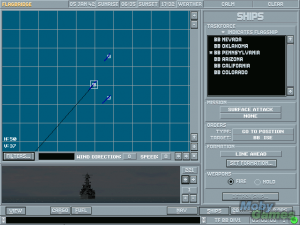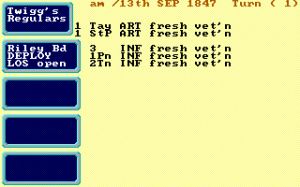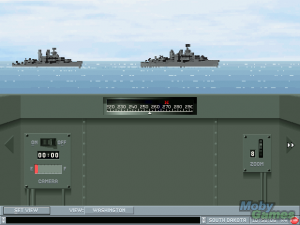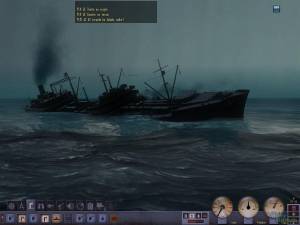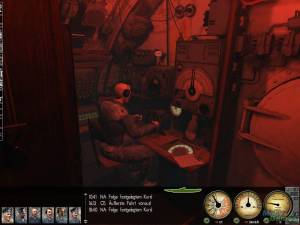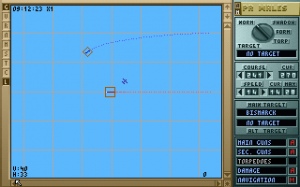Game Classification
East India Company Nitro Games Ltd., Paradox Interactive AB, 2009
Classification
VIDEO GAMEKeywords
Market
This title is used by the following domains:- Entertainment
Audience
This title targets the following audience:Age : 12 to 16 years old / 17 to 25 years old
General Public
Gameplay
The gameplay of this title is Game-based(designed with stated goals)
The core of gameplay is defined by the rules below:
Similar games
 East India Company is a strategic simulation of the struggle between different trade companies set up by European nations from 1600 to 1750 to gain dominance in the trade routes to Africa, but especially East India. In different campaigns and scenarios, players choose one of the available nations (Britain, Denmark, France, the Netherlands, the Roman empire, Portugal, Spain or Sweden) and serve as a commander under the crown to establish and expand trade routes, and bring down the competition.
East India Company is a strategic simulation of the struggle between different trade companies set up by European nations from 1600 to 1750 to gain dominance in the trade routes to Africa, but especially East India. In different campaigns and scenarios, players choose one of the available nations (Britain, Denmark, France, the Netherlands, the Roman empire, Portugal, Spain or Sweden) and serve as a commander under the crown to establish and expand trade routes, and bring down the competition.
Gameplay takes place on different strategic levels. On the main strategic level, players are presented a map of Europe, along with Africa and a part of Asia. It shows the different home ports of the nations, along with trade ports that can be visited. Players can direct the fleets to visit certain ports to trade goods, engage in battles with pirates or other ships, or try to conquer a port (to provide a safe haven for passing ships that need to stock up, and make it possible to trade to the full extent). Multiple fleets can be controlled at once and the movement of the ships is shown visually, along with a range of sight to spot other ships.
Most of the management takes place in the port view, the second strategic level. In the port, players can build new, historically accurate ships in the shipyard, assign them to fleets, hire commanders, crew and ammunition, upgrade buildings, and buy goods to trade. Some of the ship types are the schooner, brig, flute, East Indiaman, Cutter, Xebec, Galleon and Frigate. At later moments in time, when science has advanced, even a ship-of-the-line with 90 guns become available. On the marketplace, the player needs to investigate what kind of goods are most valuable to bring to East India. This includes iron, wool, weapons, tobacco and more. The market is dynamic, meaning that the value can decrease of increase over time, presented through statistics, and the player needs to anticipate what the other nations are focusing on. Most of the campaign missions require the player to build ships and bring in specific goods such as silk or porcelain, conquer a number of ports, or defeat a certain nation. Pacts and alliances can be bargained along with money in a negotiation screen and it is also possible to declare war.
When engaging into fights with other fleets, the third strategic level can be entered: the tactical level. In this part of the game, players get direct control over the ships in the fleet in a 3D environment. The ships need to be navigated into battles with other fleets, by forming strategic lines, engaging the enemy ships by shooting either the hull, the sails or the crew (depending on the type of ammo), and take into account the weather conditions and wind direction. Ships are guided in real-time and when close to an enemy ship it is possible to fill up a meter to board the ship and seize the goods. At the same time, players can throw their cargo overboard to move faster and flee from the battle. Even more options are presented in the Direct Control mode, where players can manually move a ship, shoot the cannons and gain control over every aspect of the battle. When focusing on the trading aspect exclusively, it is also possible to have the computer AI auto resolve the conflicts without going into battle personally. A number of actions (including trade routes) can be set to be performed automatically, even though every single aspect of the game can be controlled manually as well. On the other hand, there are also quick battles available from the main menu where all the strategic trade aspects are ignored in favour of a series of direct battles.
Multiplayer is available for up to twelve players over the internet or a local network. The different game types are:Commander vs. Commander: two-player battle with five shipsLast Man Floating: team battlesDomination: hold marked areas under control for a set amount of time.Team vs. Team: sink the opposing team with a number of ships available. [source:mobygames]
Distribution : Retail - Commercial
Platform(s) : PC (Windows)
 Français
Français English
English






